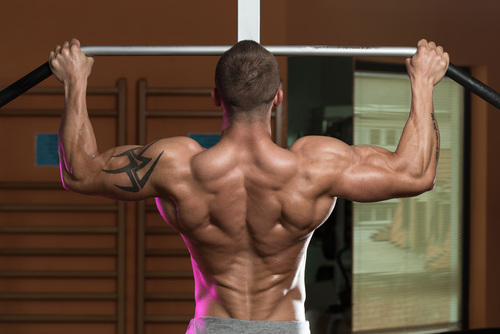[fusion_builder_container hundred_percent=”no” equal_height_columns=”no” menu_anchor=”” hide_on_mobile=”small-visibility,medium-visibility,large-visibility” class=”” id=”” background_color=”” background_image=”” background_position=”center center” background_repeat=”no-repeat” fade=”no” background_parallax=”none” enable_mobile=”no” parallax_speed=”0.3″ video_mp4=”” video_webm=”” video_ogv=”” video_url=”” video_aspect_ratio=”16:9″ video_loop=”yes” video_mute=”yes” video_preview_image=”” border_size=”” border_color=”” border_style=”solid” margin_top=”” margin_bottom=”” padding_top=”” padding_right=”” padding_bottom=”” padding_left=””][fusion_builder_row][fusion_builder_column type=”1_1″ layout=”1_1″ spacing=”” center_content=”no” hover_type=”none” link=”” min_height=”” hide_on_mobile=”small-visibility,medium-visibility,large-visibility” class=”” id=”” background_color=”” background_image=”” background_position=”left top” background_repeat=”no-repeat” border_size=”0″ border_color=”” border_style=”solid” border_position=”all” padding=”” dimension_margin=”” animation_type=”” animation_direction=”left” animation_speed=”0.3″ animation_offset=”” last=”no”][fusion_text]
If your physique and performance is a chain, each of the training phase is like a link in that chain. By improving upon one of them, it will benefit the others.
For those interested in making progress as fast as possible, knowing when you reach a point of diminishing returns in your current training phase is essential. Not only to avoid plateaus, but to prevent actually moving backwards in other aspects of your training by staying in one phase too long.
Here are some guidelines that will help you determine when it is time to transition out of your current phase to continue making maximal progress.
Neurological Training Phase
From a muscle building perspective the goal of a neurological phase is to increase your efficiency at contracting more muscle fibers, more intensely. It’s not necessarily about how much weight you have added to the bar. Strength gains are a good indicator that you are achieving greater neurological efficiency, so long as execution remains constant.
A strength athlete will make small adjustments to their program to keep making incremental strength improvements in a specific lift. However, we are only focused on what strength gains will transfer to increased hypertrophy. So when your strength gains begin to taper off, it’s best to then change things up.
Typical hypertrophy & metabolic training can wire our system more for metabolic efficiency. Once you have balanced that out with improving intensity of contraction with some neurological training, you will see a new spark in your next hypertrophy phase.
[/fusion_text][fusion_text]
Hypertrophy Training Phase
 When you are trying to pack on muscle, and using higher volumes of training and nutrition, your body will eventually adapt to that process. Remember muscle mass is a highly metabolically expensive commodity, as is body weight. You body will try and limit both of these by shifting more and more of those extra calories to fat as your body becomes accustomed to the diet and training.
When you are trying to pack on muscle, and using higher volumes of training and nutrition, your body will eventually adapt to that process. Remember muscle mass is a highly metabolically expensive commodity, as is body weight. You body will try and limit both of these by shifting more and more of those extra calories to fat as your body becomes accustomed to the diet and training.
Insulin resistance and inflammation are going to be your cues to knowing when you need to switch gears out of the hypertrophy phase. As these rise, you will notice a few things.
- It’s harder to get a good pump that last the whole workout without a ton of supplementation.
- Your body composition will start to change, meaning you will start adding some some fat. Be careful that you take mind that this fat is not always subcutaneous, and can be inside the viscera, so if you can still see your abs but your pants are getting tighter, thats a sign.
- You will notice that carbohydrates start to affect your energy levels differently. Your energy levels will get very sporadic, and rise and fall fast with and between meals.
The “hangry” phase between meals means the hypertrophy phase is coming to an end and it’s time to reset your metabolism a bit.
[/fusion_text][fusion_text]
Metabolic Training Phase
Efficiency leads to greater performance, and that’s what you need to accomplish during a metabolic phase. By stressing the muscle’s ability to fuel a session it becomes better at converting all fuel sources to ATP, and storing more glycogen. Once you become efficient, and your body adapts to storing more nutrients in the muscle. There is not a lot of hypertrophy stimulus that comes from high metabolic training.
 Expect to use lighter weights, strength is not a good indicator here. You should notice your energy levels and appetite becomes more stable between meals and throughout the day. If doing more of a maintenance calorie level you’ll know you have improved this system when you see a drastically improved stamina in your workout sessions. You’ll be able to go deeper into sets and a workout without losing performance or feeling in the muscle.
Expect to use lighter weights, strength is not a good indicator here. You should notice your energy levels and appetite becomes more stable between meals and throughout the day. If doing more of a maintenance calorie level you’ll know you have improved this system when you see a drastically improved stamina in your workout sessions. You’ll be able to go deeper into sets and a workout without losing performance or feeling in the muscle.
When doing this in combination with lower calories, performance will drop as you deplete glycogen levels. This will create a significant loss in water weight. A good indicator is that once you see your weight plateau, you have likely depleted your tissues to the point that they will be forced to become more efficient.
Regardless of doing this in maintenance or lower calories, you should see improved body composition on this phase. If that is your main goal, you may choose to stay in this phase longer. If your goal is pure muscle mass and you are fairly lean, you may need as little as one week in this phase. Expect to use lighter weights here, but if you start to struggle to finish your workouts it may be a sign that your system needs a de-load from the metabolic stress.
[/fusion_text][fusion_text]
Primer
The Primer phase is probably the one phase you want to error on staying in “too long” as opposed to “too short”. All the other phases are dependent on the progress you make in the primer phase, to make every rep count. Whether it’s a heavy set of 5 or a NOS set, the stimulus you get is doing to be dependent on your ability to execute the contraction.
Remember that the primer phase is not “difficult” in terms of load or fatigue, so really good contractions should come pretty easy. When you start going too heavy, using lots of extended sets, or adding tons of volume, those contractions become much harder to maintain, and the tendency to lose execution and cheat becomes higher.
Your goal is to get to the point where you can maintain competent execution and feel the muscle with heavier and more fatiguing sets in the primer phase. Then and only then you truly are ready to challenge the muscle in other phases of training.
Summary:
There are some key indicators that you can use for each type of training to determine when you hit a point of diminishing returns. These mean that you might benefit from either a de-load or transitioning into a different phase.
Keep in mind that one of the most crucial considerations for any training phase is to ensure that your nutrition strategically matches the demands and energy systems you are working with. This is why learning to cycle your nutrition based on your phase, as well as the bio-feedback indicators mentioned above can drastically influence how much progress you make from phase to phase and long-term.
Learn How to Gain Muscle Without Fat by applying a cyclical nutrition strategy that intelligently matches your training. When combined with the knowledge on when to switch phases, you’ll be set for unstoppable long-term progress.
This is why the system in the Incredible Bulk is so effective. It utilizes your body’s feedback to determine when to change nutritional phases to optimize your hormonal environment and work WITH your body’s natural responses to these variables. Check it out below.
[/fusion_text][fusion_text]
Click below to see the strategic cyclical protocol I use for myself and my clients to make the most of every phase and respond to your body’s natural bio-feedback.
[/fusion_text][fusion_imageframe image_id=”7814″ style_type=”dropshadow” stylecolor=”” hover_type=”liftup” bordersize=”” bordercolor=”” borderradius=”” align=”center” lightbox=”no” gallery_id=”” lightbox_image=”” alt=”” link=”http://muscleexpt.pakman00.hop.clickbank.net/?pid=bulk&tid=switchphases” linktarget=”_blank” hide_on_mobile=”small-visibility,medium-visibility,large-visibility” class=”” id=”” animation_type=”” animation_direction=”down” animation_speed=”0.3″ animation_offset=””]https://www.benpakulski.com/wp-content/uploads/bulk-banner-new-1-1024×244.png[/fusion_imageframe][/fusion_builder_column][/fusion_builder_row][/fusion_builder_container]